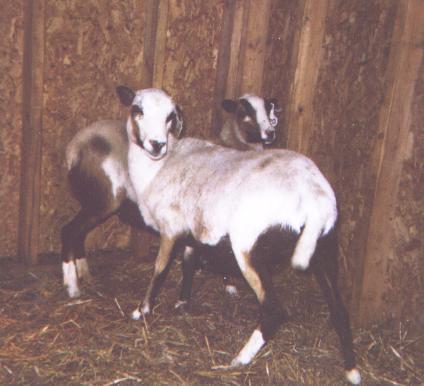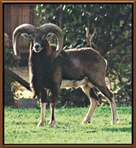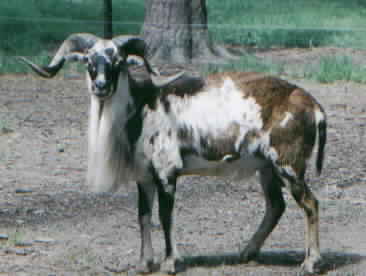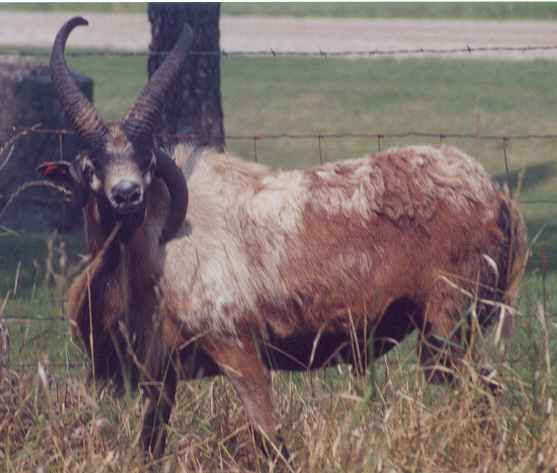 |
| Information on the Painted Desert Sheep |
| Color The characteristic that sets these sheep apart from other breeds is their colorful markings. They are often marked in a combination of colors and can be tri- or quad-colored. Some individuals have white markings on a dark body; others have dark spots on a white or roan body. They may have spots within spots. Patterns can be distinct with oval or splashed markings (much like the paint horse), or marbled where the colors just blend together. Some individuals may be highly marked while others have only minimal markings. Sheep with Jacob influence may have blue eyes. Although not a discriminating factor, there should be some pigment around the eye in the form of eye patches or dark eyelids. Pink eyelids are prone to squamous cell carcinoma in any animal. |
| Horns At this time, the Painted Desert is known mostly for the ram's ability to grow a trophy-class set of horns. They are in demand on exotic leases. These sheep have been crossed with other breeds such as the Merino, Rambouillet, Jacob, and Navajo Churro sheep to improve horn and reach trophy class quicker. Rams will have different shaped horns according to the influence of other breeds. Tight horn curls growing close to the head are indicative of Barbados blood and can cause problems if the horns grow too close to the head. Mouflon influence is shown by the large supracervical (sweeping out and curving behind the neck) heart-shaped horns, or homonymous (sweeping outward in a spiral) horns. Horns should be well-balanced and symmetrical. You will see some magnificent horns on these sheep and even wonderfully matched set of four-horns. Sadly the most magnificent specimens are usually hanging in someones's living room. Ewes don't usually have horns unless they are the result of a cross where ewes are horned. |
| Size The size of these sheep varies due to the influcence of other breeds.There is no strict standard at this time. Ewes may range in weight from 60 to 120 pounds and have heights from 21 to 25 inches at the shoulder. Rams weigh from 75 to close to 200 pounds and may be 30 inches or more at the shoulders. |
| Coat The Painted Desert is not a "woolless" breed. It actually is a double-coated breed that casts its wool in the spring. They are adaptable to extremes in weather. In the fall, they start growing their undercoat of wool which gets even thicker as the weather gets colder. The rams will grow a luxuriant mane (another feature that makes them a favorite of trophy hunters) often beginning at the shoulders with a thick bib at the front of the neck. In the spring, the wool is shed in clumps along with some of the longer, outer guard hairs. What remains is a short, slick coat of hair. Because of their short hair coat during the summer, these sheep will rarely be bothered by the heat and external parasites that plague the wool breeds.The tails of these sheepare not docked as there is no real need to. There should be no wool remaining on the sheep for the summer months. If so, then the sheep has obvious close wool breeding. The only exception would be lambs that don't ususally she until the next year. |
 |
| Two beautiful Painted Desert ewes from JC's Exotics. The front one is tri-colored and the one in back appears to be a quad-colored ewe with white, black, brown and tan. |
| 4-Horn |
| Homonymous |
| Supracervical |
 |
 |
 |